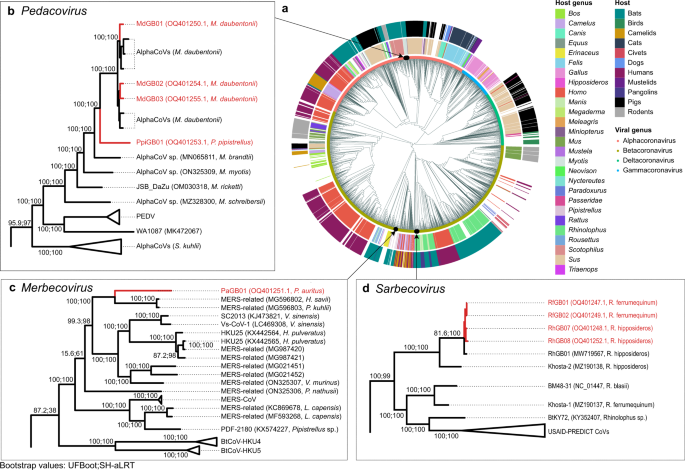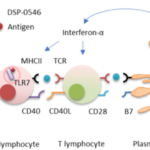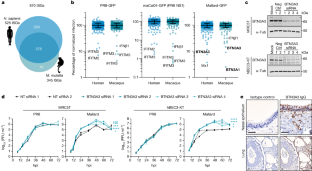2023-06-27 インペリアル・カレッジ・ロンドン(ICL)
◆調査では、16種類の英国のコウモリから、COVID-19やMERSを引き起こすものと関連する2つの新型コロナウイルスを含む4種類のコロナウイルスが循環していることが報告されましたが、現在のところこれらのウイルスは人間に感染する能力を持っていません。
◆野生動物でのウイルスの監視は公衆衛生上の問題であり、英国ではコウモリが保護されているため、保護団体との協力が重要です。今後、コウモリが持つコロナウイルスの多様性を文書化するため、保護活動家やコウモリの再生能力を持つ人々との連携が重要になります。
<関連情報>
- https://www.imperial.ac.uk/news/245714/monitoring-british-bats-help-identify-coronaviruses/
- https://www.nature.com/articles/s41467-023-38717-w
保全活動家のネットワークを通じて英国に生息するコウモリ16種のゲノム・スクリーニングを行い、人獣共通感染症の可能性のあるコロナウイルスを発見した。 Genomic screening of 16 UK native bat species through conservationist networks uncovers coronaviruses with zoonotic potential
Cedric C. S. Tan,Jahcub Trew,Thomas P. Peacock,Kai Yi Mok,Charlie Hart,Kelvin Lau,Dongchun Ni,C. David L. Orme,Emma Ransome,William D. Pearse,Christopher M. Coleman,Dalan Bailey,Nazia Thakur,Jessica L. Quantrill,Ksenia Sukhova,Damien Richard,Laura Kahane,Guy Woodward,Thomas Bell,Lisa Worledge,Joe Nunez-Mino,Wendy Barclay,Lucy van Dorp,Francois Balloux & Vincent Savolainen
Nature Communications Published:27 June 2023
DOI:https://doi.org/10.1038/s41467-023-38717-w

Abstract
There has been limited characterisation of bat-borne coronaviruses in Europe. Here, we screened for coronaviruses in 48 faecal samples from 16 of the 17 bat species breeding in the UK, collected through a bat rehabilitation and conservationist network. We recovered nine complete genomes, including two novel coronavirus species, across six bat species: four alphacoronaviruses, a MERS-related betacoronavirus, and four closely related sarbecoviruses. We demonstrate that at least one of these sarbecoviruses can bind and use the human ACE2 receptor for infecting human cells, albeit suboptimally. Additionally, the spike proteins of these sarbecoviruses possess an R-A-K-Q motif, which lies only one nucleotide mutation away from a furin cleavage site (FCS) that enhances infectivity in other coronaviruses, including SARS-CoV-2. However, mutating this motif to an FCS does not enable spike cleavage. Overall, while UK sarbecoviruses would require further molecular adaptations to infect humans, their zoonotic risk warrants closer surveillance.


